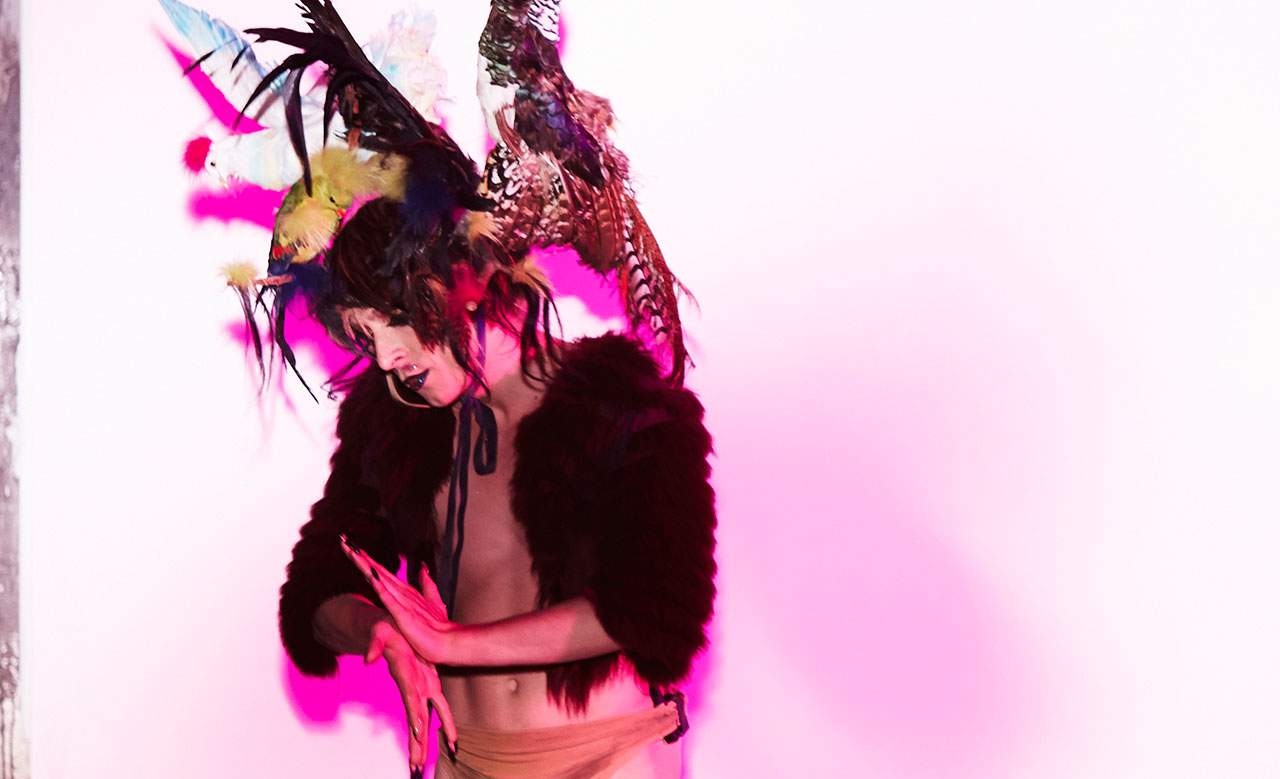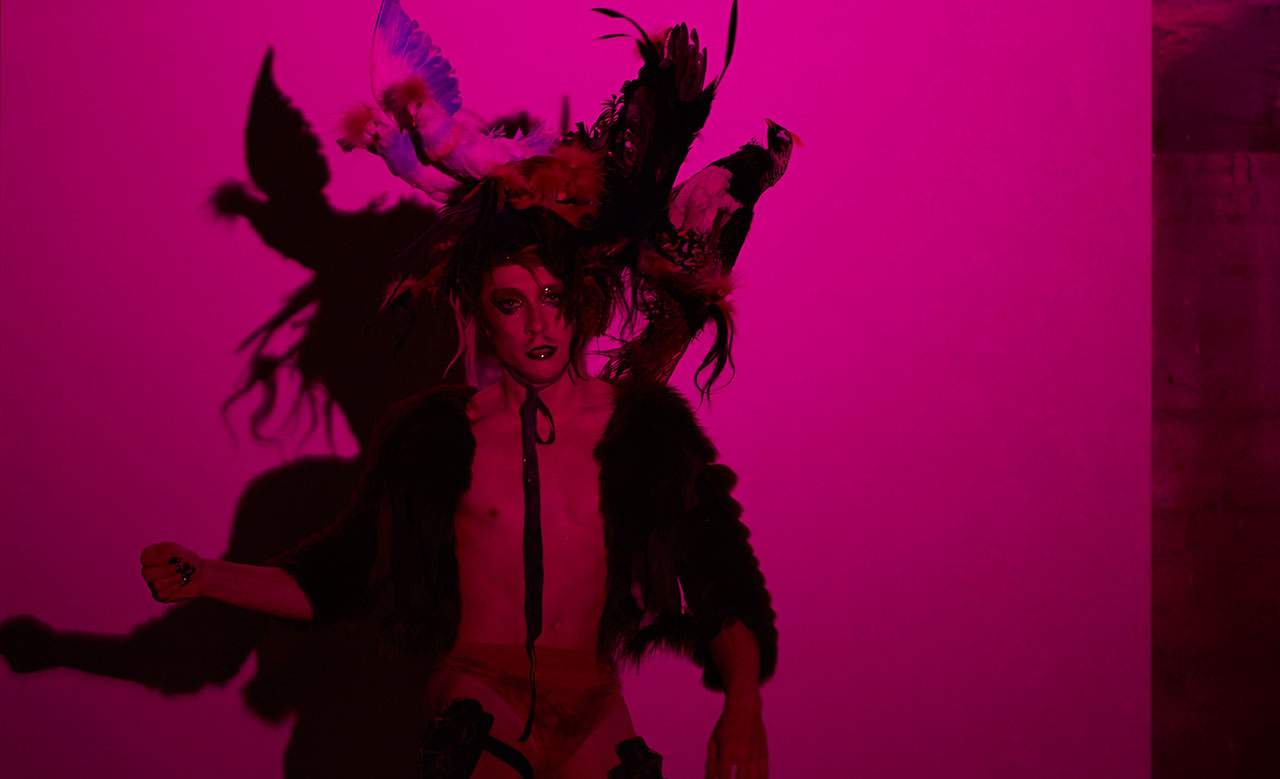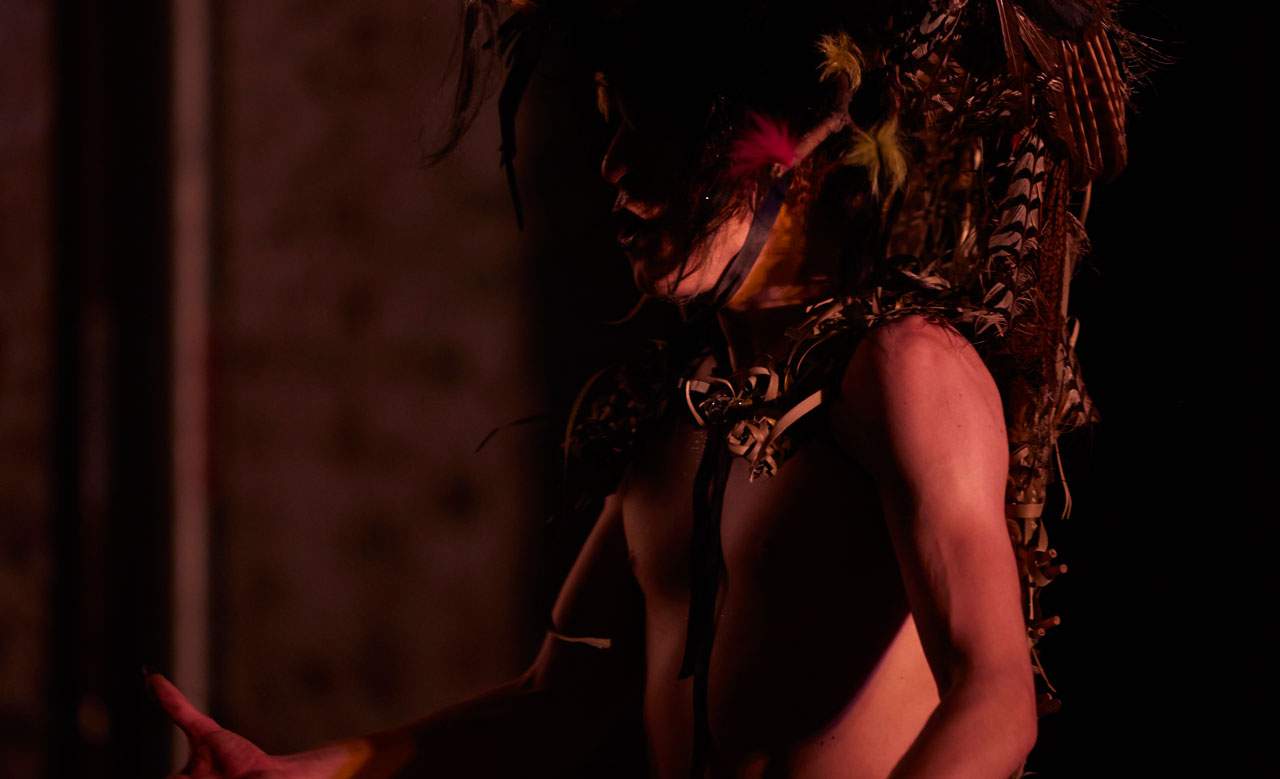French Dance Polymath Francois Chaignaud on Ballet, Twerking and Tutting
The French choreographer schools us in high- and low-brow dance culture.
French choreographer and dancer Francois Chaignaud has never played it safe. His first work, produced in 2005, delved into the long relationship between dance and prostitution — territory that most choreographers prefer to ignore. Since then, he's organised mammoth dance parties inside The Kitchen in New York City, transformed the Tate Modern into a live performance museum and presented the history of grime music at London's Sadler Wells Theatre.
Now, he's arrived in Australia for the first time, bringing with him his first-ever solo show. Dumi Moyi, which he is performing 11 times over four days at Carriageworks, is inspired by traditional Indian religious performing art and features music from all over the world, across hundreds of years of history — from 12th-century Sephardic melodies to Ukrainian rhythms to Spanish folk songs. Francois took a quick break from his hectic performance schedule to chat with us.
For a long time, you have been bringing together different genres and breaking down barriers between formality and informality. Why has this been so important to your work?
First, it is to free myself — to not feel locked into a narrow field of practice. But it also comes from the seminal work we have been doing with Cecilia Bengolea. Paquerette (2004-2008), our first piece, was made from the perspective that the work of dance is not so different to the work of sex workers. It was a way to connect to the long history of the relationship between dance and prostitution — a relationship that, in contemporary dance, has been ignored.
Working on that piece raised my awareness of the hierarchies between practices: why some body work, like ballet, is considered of high value, while other body work, which is just as virtuosic, is considered to be nothing artistic at all. These hierarchies exist within the dance world itself, between, for instance, ballet and urban dances, where there’s a lot of institutional support for certain gestures and not for others.
I think this reflects on how the world is constructed on a long history of inequalities and domination. It’s interesting, as dancers, to be aware of it, and to see if it’s possible, through our bodies, to create connection and sisterhood and brotherhood, and learn from other practices, while remembering where they come from.
Why do you like performing in unusual spaces?
I like the intimacy and the proximity. I find it hard to look at dance in big- or medium-sized theatres, because, depending on the piece, it can be hard to get empathy for dancers, or to reach the perfect gazing situation for the audience, depending on the steepness of the tribune, or the architecture of the theatre. I hope that, by going out of the black box and creating a more intimate frame, we can change the relationship between the dancers and the audience. The proximity allows us to be aware of so many more details of the work. Speeds, tensions, efforts, weaknesses, smells, vulnerability ... become much more perceptible. And for me, as a performer, the properties of each space are very informative, and transform the dance and its imagining.
Dumi Moyi is partly inspired by traditional religious performances from Malabar, India. How did you come across these performances?
It’s a religious form of performance art called theyyam. I travelled to India twice — firstly, just to see it, and secondly, to watch it day and night for a week.
It’s very different to other traditional Indian art forms because it doesn’t happen on a stage but in shrines, temples or private houses. The performers don’t represent the gods, they actually become the gods and goddesses. They are even transformed visually, wearing extreme costumes — five or six metres high — and extreme make-up. But at the same time, the audiences are very near to them, so it’s possible to talk and interact and ask questions.
It’s a whole different paradigm to the one from Western theatre, where there’s a distance between performers and viewers, and it’s about illusion and presentation. Instead it’s about realness and becoming something else. To me, that is very intriguing and beautiful and questioning.
But Dumi Moyi is not a replica or mimicking or even a quotation of what I saw in India. It was just a starting point to question my practice.
What other influences have gone into Dumi Moyi?
I wanted to dance and sing at the same time. Like a child dream.
So, I chose seven or eight songs from different times and different regions of the world. I’m very interested in the power of singing, in that it makes it easy to travel through time and space. With language and music, it’s maybe easier than with movement, where it’s harder to get stories and information through.
So, the singing brings a lot of varied influences to the work — Ukrainian song, 12th-century Sephardic melody, Italian tarantella, Baroque, Spanish folk, Tchaikovsky. But all the songs are confessions or songs where the singer is using the pronoun 'I', saying something personal and trying to affect the listeners, putting a spell on them.
Now for some word association. I'm going to say a few dance-related words. Could you please tell me what each means to you in a sentence or two. Twerking.
Very ancient, spiritual, empowering practice of ass poetry. We studied some of it for Altered Natives' Say Yes To Another Excess — Twerk (2012), with Cecilia Bengolea.
Voguing.
It’s an art form I admire a lot, because of the amazing movement that’s been invented and because it’s proof that, within certain contexts, dance can really change one's life.
Hula hooping.
Hula hooping is also a very ancient game, based on the perfect and essential shape of the circle. It’s a great meditation practice for me. We made a thirty-five-minute naked hula hoop piece with Marie-Caroline Hominal [Duchesses, 2008].
Ballet.
I love ballet as I love many dance forms; I don't despise or reject ballet like some of my older colleagues may have found the need to do. It's an incredible technique, very complete.
Meanwhile, I believe it's crucial to be aware of ballet’s history, of what it is the expression of. With ballet, it is so obvious that dance styles emanate from a social context, political project and specific values.
Tutting.
I haven’t worked with tutting. But what I’ve seen fascinates me: I love to witness the extraordinary invention and involvement within such a limited starting point.
Grime music.
Cecilia Bengolea introduced me to grime music. I've been amazed by this genre, how it connects so many different musical sources, making so much sense in the contemporary, urban, post-colonial, capitalistic context of today's London.
Francois Chaignaud's Dumi Moyi is at Carriageworks' Elston Room until October 3, with only 40 tickets per show. To book, head to the Carriageworks website.








